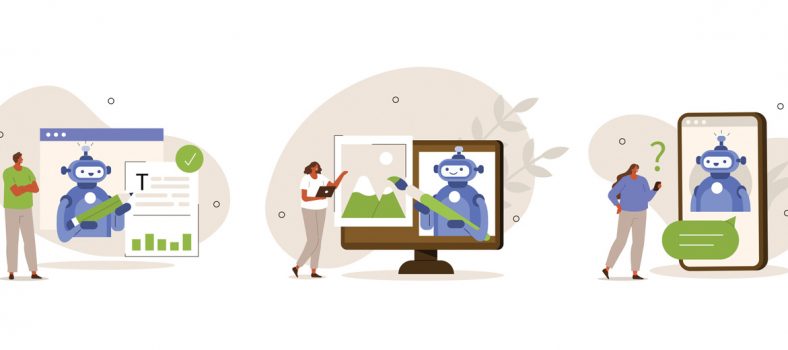If marketers hope to take complete charge of the customer experience, they must start out with one goal in mind: make a meaningful difference in the lives of customers. By knowing what truly matters to customers, they can lead the way in designing a signature experience that will create true brand loyalists.
 By Stephen Shaw
By Stephen Shaw
The billionaire grocery magnate Galen Weston only has himself to blame.
As head of Loblaw, the largest grocery chain in Canada, he made himself a celebrity pitchman for its various house brands, appearing on national TV commercials. It was a decision he came to regret.
When Canadians rose up in anger over runaway food prices this past year, they knew exactly who to blame: that preppy-looking guy they kept seeing on TV peddling Loblaw products — the scion of one of the wealthiest families in the world. A CEO who earns 431 times what an average grocery employee takes home in a year1, at a time when foodbanks have never been busier due to the soaring cost of groceries. Even more appalling is the fact that Galen Weston revoked the “hero pay” bump he gave his frontline workers during the height of the pandemic. And then to prove he is completely out of touch with the hostile public mood, he had the insensitivity to invite his 15 million PC Optimum loyalty club members to freely donate their own hard earned points to food banks.
So Galen Weston has deservedly become the most reviled business leader in Canada.
The Loblaw Board, on the other hand, is absolutely delighted with him. In 2022 the company generated a total shareholder return of 17 percent. Under his watch profits have doubled, leading most people to suspect that Loblaw, along with the other two major grocers, Metro and Sobey’s, are hiking prices way above cost, while blaming suppliers for the price inflation. Yet according to an investigation by the Toronto Star, the top three supermarket chains, which control 60 percent of the grocery trade, are using their commanding market position to jack up prices more than necessary.2 But it is not just price gouging that has the public riled up.
Five years ago Loblaw confessed to being part of an industry-wide scheme to fix the price of bread over a 14-year period. They slipped out of the government’s noose by agreeing to give all of their customers a $25 gift card as atonement. That was when the public first got a sense that Loblaw was not on their side.
Despite their misgivings food shoppers have flocked to the discount store banners owned by Loblaw in search of affordable prices. But the product prices between banners, and even between stores, can be strangely different for the very same brands. Often in-store price signage is missing — or there are price discrepancies between the promoted price and what gets actually rung up. Heavy handed security measures to deter theft leave shoppers feeling like criminals. Stale dated food is left on shelves. And the company is forcing shoppers to use self-checkout by reducing the number of cashiers, deliberately creating longer queues in the regular checkout lanes. Shoppers who do have questions or complaints struggle to find knowledgeable staff available to answer them, and those employees are so oppressed that they are mostly indifferent to customer concerns.
All of that adds up to a dispiriting and frustrating store experience which grocery shoppers have come to dread. Yet Loblaw and the other grocers can live with their rock bottom Net Promoter Score3 ratings (Loblaw’s is a negative 4) because profits have never been higher. And profitability, in most large public companies today, is what really matters. So even though Loblaw’s professed purpose is to help “Canadians Live Life Well”, claiming it makes “good food affordable”, their actions suggest otherwise.
It is exactly that kind of double speak — saying one thing, doing another — paying lip service to customer care — willfully skirting the law while trying to come across as a good corporate citizen — mistreating employees while praising their virtues as pandemic heroes — that enrages people. And the fact is, customers have no choice but to shop at these corporate goliaths: the smaller independent grocers, which are usually more customer friendly, have either been squeezed out of the market, or been swallowed up by one of the major chains.
The growing public anger at being abused applies to many other industries as well: airlines, telcos, banks, insurers, and more. Think about those unconscionably high service charges by banks versus the miserly interest rates they offer. Or the incentive deals used by telcos to ensnare new customers versus what loyal customers are forced to pay. Or the time it takes to hunt down sales associates in perpetually understaffed stores. Or the caste system that now exists on planes along with capricious flight cancellations and delays, surly flight attendants, cramped seats and larcenous extra fees.
How about everyone’s biggest gripe: finding an actual contact number to call in the event of a problem — and even if you find one, being subjected to a punishing hold time before you actually connect with a live agent whose job depends on getting you off the line as fast as possible.
No wonder people are fuming. And marketers can no longer shrug these problems off as someone else’s job, not as long as they aspire to take charge of the entire customer experience.
Radical Transformation
According to the latest Customer Rage Survey, customers are experiencing a greater incidence of product and service problems than ever before, double what it was in 1972 when the survey first appeared4. What really upsets people is the effort they have to go through to get their complaints resolved. Mounting rage over poor service is spilling over into public displays of uncivility, as customers take out their repressed anger on store associates and other front line staff. And people are certainly more prepared than ever to voice their exasperation on social media.
Those findings are echoed by the American Customer Satisfaction Index (Figure 1) which analyzes the performance of 400 companies in 47 industries. Since 2019 there has been a sharp decline in customer satisfaction, with 80 percent of companies failing to increase their satisfaction score since 2010. In 2022 satisfaction fell to its lowest level in two decades, recovering only marginally in the second quarter of this year5.
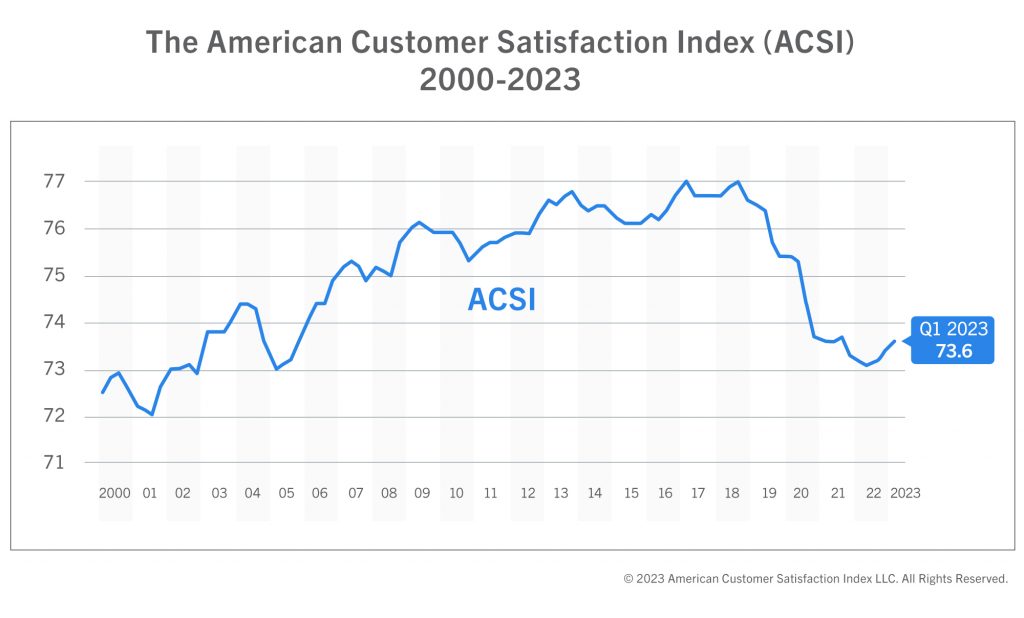
Figure 1 – Since 2019 there has been a sharp decline in customer satisfaction.
Forrester’s Customer Experience Benchmark Survey also reports a steep decline in CX quality. The Canadian version of the survey, which is based on 101 brands across nine industries, found that average CX quality among Canadian brands in 2023 fell for an unprecedented second year in a row (just as it did in the U.S.). CX quality in Canada is now at its lowest point since 2016.6
How is it possible that with all of the attention paid over the past couple of decades to the importance of a great customer experience — all of the countless books and seminars on the subject, all of the proselytizing by the management consultants, all of the “we care” proclamations by companies, all of the “Please tell us how we did today” surveys, all of the studies showing the undeniable correlation between customer loyalty and market performance — that CX quality is actually getting worse and not better? Even more baffling is that according to a recent Dentsu study, 87 percent of CMOs worldwide agree that brands are now built through experiences.7
Part of the problem is that customer expectations keep rising faster than companies can keep up. Part of it is that companies are still organized vertically while customers interact with them horizontally. Part of it is related to a lack of systems integration and the glacial pace of digital transformation. But the main reason, at least according to Forrester, is that just three percent of companies are truly “customer obsessed”. Which means that for almost all companies, it is business as usual. Instead of recognizing customers as an asset, whose value appreciates over time, they view them as interchangeable. Serving customers is thought of as a cost of doing business, instead of the reason those companies are in business.
To be truly “customer-obsessed” means rethinking from scratch how the company conducts business. Merely papering over the cracks just buys time. Solving complaints faster just soothes the already disgruntled. And while eliminating pain points is critical to stem customer attrition, it does nothing to address market differentiation and growth.
Any attempt to provide an exceptional experience — one that stands out from the competition — one that is memorable — one that earns rave reviews and not rage reviews — demands an enterprise-wide effort to transform the culture of the company, its processes, its structure and its technology — all at the same time. That’s a tall order even for the most zealous proponents of change. The company has to be brave enough to pursue radical transformation. It has to funnel as much operational budget as it can afford into unifying the end-to-end experience, while fixing the most bothersome causes of dissatisfaction; at the same time it must come up with innovative ways to create new value for customers that will leave them feeling excited about what comes next.
All of that starts by coming up with a compelling CX vision and transformation charter that spells out how life will be different for the customer: Easier, more convenient, more rewarding, all of that for sure, but even more audacious: serving as a difference maker. Helping people overcome the day-to-day problems they are grappling with. Making their lives more enjoyable. More fulfilling. More joyful even. That vision should be consistent with the purpose and values of the brand. And everyone should be eager to embrace the need for transformation because it will lend meaning to their work. “The fastest way to get customers to love your brand is to get employees to love their jobs,” says Salesforce’s top CX expert Tiffani Bova.8
The group best positioned to lead CX transformation is marketing. It is marketing’s job to make customers feel proud of their relationship with the brand. The brand should be a joyful part of people’s lives — something they can’t live without — something they will go out of their way to buy — something they would miss if it ever disappeared. That is the true definition of loyalty. As leading CX expert Jodi Picoult says, “Customer Experience is how people feel about their interactions with you”.9
A Signature Experience
The feelings people have toward their interactions with airlines these days is anything but joyful. Miserable might be a more apt description. And it is not just that airlines seem to go out of their way to treat economy class passengers as cargo — on top of exploiting regulatory loopholes to deny them flight refunds for the flimsiest reasons (e.g. “circumstances beyond our control”) — it is the insouciant attitude that goes with it. Consider the massive backlog of unresolved passenger complaints that have flooded the Canadian Transportation Agency over the past year, averaging more than 3,000 per month. Airlines also make it impossibly hard to reach a customer service agent, as though that is the last possible outcome they want, preferring to deflect calls to a disembodied and rarely helpful chatbot. But that just makes irate customers even more irate.
There was a time, of course, when airlines took care to fuss over all of their passengers, the so-called “golden age of flying”. Everyone was treated with respect and dignity. Meals were even served on real china with cloth napkins. Flying felt exotic — something you looked forward to — a treat. Granted, it was more expensive to fly compared to today but that was due mainly to the smaller passenger capacity of planes and the nascent state of aviation at the time. Air fares were controlled by the regulatory authorities who viewed airlines as a public utility operating on behalf of the common good. The two major airlines at the time, government-run Air Canada and privately-owned CP Air, were granted exclusive routes and assured of a reasonable profit as long as they provided adequate regional service.
Deregulation caused all of that white-glove treatment to crash to the ground. Ticket prices nosedived as the skies filled with an emerging class of low-cost carriers, many operating on shoestring budgets, who were more like an airborne bus, wooing the “friends and family” segment of the population with cheap fares. The major carriers swung their attention to the more lucrative premium fliers, particularly the “road warriors” traveling on business. To keep them from chasing the best fare, they introduced frequent flyer programs, while stripping away perks from everyone else. They began to cram as many passengers on to planes as possible, shrinking the available seat space to make room, while cutting back on amenities and tacking on all kinds of extra fees. Now there were two classes of passengers: the type who could afford to travel in comfort, and everyone else.
That is, until Porter Airlines came along.
Porter began operating in 2006 as a short-haul carrier, offering a more “refined” flying experience at competitive fares. From the start, the goal was to make air travel more humane again. “The Porter experience was certainly considered in great detail before we ever started flying,” Robert Deluce, the founder, has explained. “Our ‘Flying Refined’ tagline emphasizes the fact that we strive to restore a certain level of dignity to air travel for all of our passengers.”10
Passengers rave about their experience, every moment of it, from the time they step into the lounge area, to the spaciousness of the seats, to the complimentary flight snacks, to the throwback uniforms worn by the friendly flight attendants. Best of all, no middle seats! That’s why it has the fewest complaints per 100 flights of any airline in Canada (Figure 2).
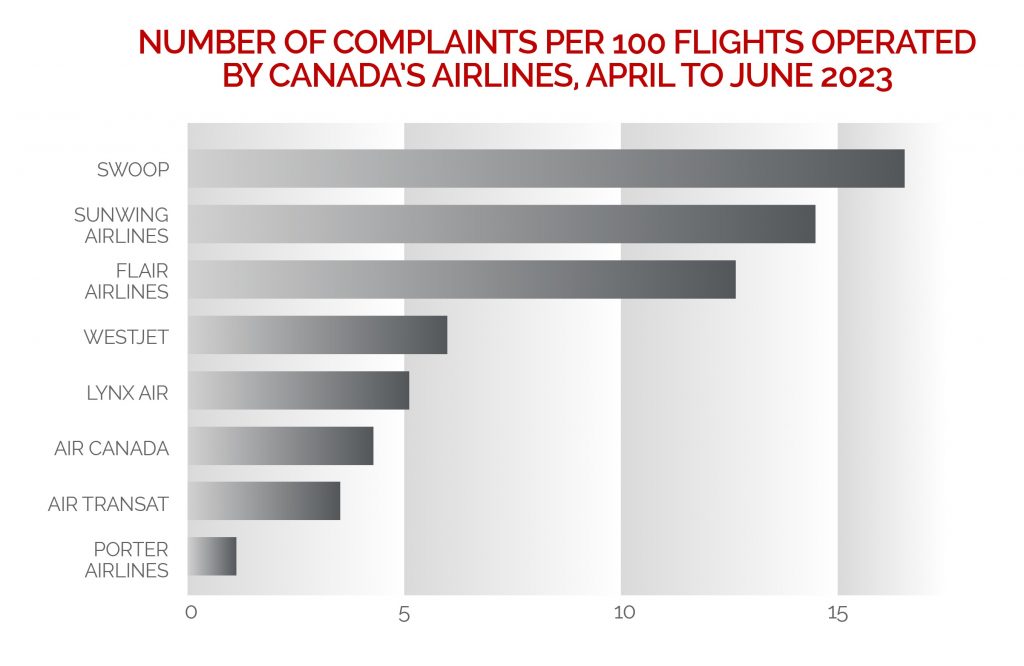
“We are very much in the customer service business”, DeLuce says. No wonder Porter is only one of two airlines in North America to be awarded a four-star rating by Skytrax (the other being JetBlue). And recently it was chosen as the winner of the 2023 Passengers Choice Awards for Best Cabin Service in North America.
The gap in the market that Porter identified was ripe for harvesting: harried travelers fed up with the shabby treatment they were getting. “Why would you go after Air Canada on what they do best?”, says the current CEO Michael Deluce. “You go after them on what they do worse, which is economy, which is 90 percent of people”.11
So why did Air Canada and West Jet — whose NPS ratings are as low as you expect them to be, in the low teens — not jump at the same opportunity to satisfy the needs of the majority of fliers? For the same reason Loblaw does not: they are not “customer-obsessed”. All they care about is maximizing the profit margin on an occupied seat, not making the flight experience less of an ordeal.
Porter has made the travel experience more joyful for passengers and now it is building on that reputation for refined service by expanding the number of routes it flies across North America. If it succeeds in drawing away even more passengers from the other airlines, it will have proven that the best way to grow is by delivering a signature experience that transforms the expectations of customers.
True Brand Loyalty
For a start-up company like Porter, the opportunity was clear: win over disaffected travelers by offering them a distinctive flying experience they could not get elsewhere. For incumbents, however, the business case is rarely as clearcut. For one thing, the potential payoff is not always apparent. A low NPS score, by itself, is not enough of a hazard signal if the industry benchmark is not much different. Customers are unlikely to defect just for the sake of switching unless they’re presented with a much better deal.
Parity can lull companies into a feeling of false security. It usually takes the arrival of a disrupter brand — like Porter — to shake them out of their complacency and create a sense of urgency. Even a sharp drop in the NPS score may be shrugged off as a temporary blip — until the other key indicators, like revenue growth and market share, start to fall as well. By then it might be too late to act: Customers may already be heading for the exit.
Most companies have no clue what a one-point increase in NPS is even worth — nor have they bothered to figure out the halo effect on the key revenue drivers. So that makes it tough to make the argument for a substantive investment in transformational change, especially when the CFO is demanding to know the expected ROI. Presenting market studies proving that CX leaders perform better than laggards will never be enough to convince a skeptical CFO, not even if NPS’s originator Fred Reichheld showed up in person to plead the case.
Yet most people say, according to an oft-cited Salesforce study12, that the quality of the customer experience is just as important as the products and services a company offers. Improving that experience should logically translate into an across-the-board gain in all of the key customer measures that drive company revenue: share of wallet, average annual spending, retention, and cross-sell ratio. And since 80 percent or more of revenue can usually be attributed to existing customers, making them happier is the surest path to profits (Figure 3).
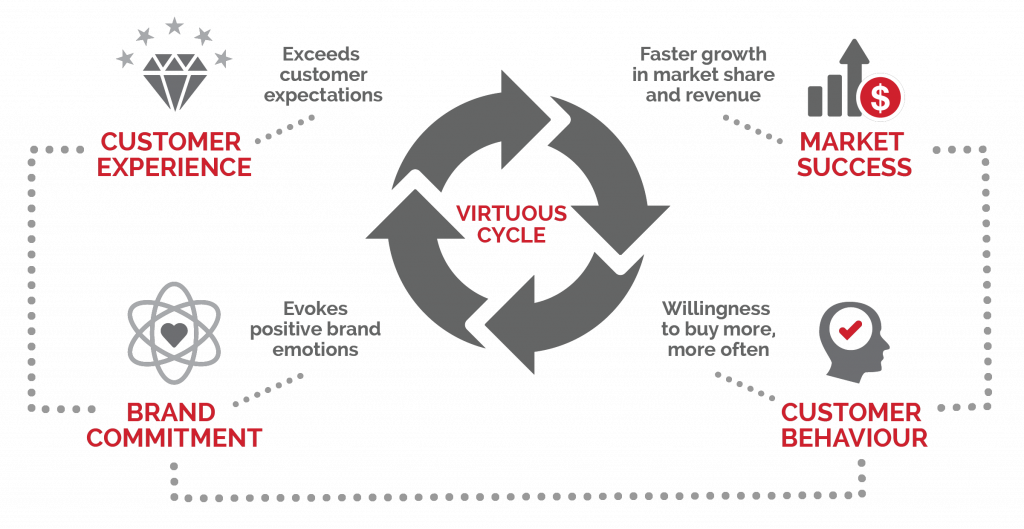
Figure 3 – A customer experience that exceeds customer expectations leads to greater brand commitment and buying which ultimately drives market success.
If the brand experience consistently pleases customers — makes them feel the company always acts in their interests — makes them feel treated fairly and honestly — makes them feel special — they will gladly buy more, pay more, more often. They will forgive the occasional screwup. They will be more likely to recommend the brand. They will be proud members of the brand community. Their willingness to remain loyal, however, is directly related to whether they believe the brand cares more about them than making the next sale.
True brand loyalty lies at the intersection of three dimensions: the willingness to re-purchase the brand; trust in the brand always doing the right thing; and the degree of brand devotion and enthusiasm (Figure 4). Customers who are passionate enthusiasts have an emotional connection to the brand — will go out of their way to buy it. To earn that heartfelt loyalty, customers must feel their lives have been improved in some way. They expect exemplary service and support — prompt delivery of orders — immediate answers to questions — products that work as promised — “no questions asked” refunds — complaints speedily and amicably handled. Anything else is a broken promise — a letdown — a reason to look elsewhere.

One company that understands the connection between a superior experience and true loyalty is Ottawa-based Lee Valley Tools. The family-owned outfit started out as a niche mail order cataloguer for woodworking tools in 1978 and has grown into a thriving multi-channel retail business offering a vast array of tools and gadgets. The devoted customer base loves the company for its brand ethos which makes fairness and integrity core values. The company has a policy not to pay any employee more than ten times the wage of the lowest paid person because, “It’s not about money; it’s about your life and what you enjoy doing” says the CEO Robin Lee13 (in stark contrast to the profit-obsessed Galen Weston). As a result, his extremely dedicated staff go the extra mile to offer the best service possible which is why customers adore the brand.
Another iconic Canadian brand revered for its customer-obsessiveness and service excellence is Four Seasons Hotels. As the founder Isadore Sharp once explained, “Customers value luxury, but that didn’t necessarily mean elegant surroundings or gourmet meals. When we looked closely, it became clear that the greatest luxury for our customers was time. And service could help them make the most of that.” Often cited by Fortune magazine as one of the best companies to work for, Four Seasons gives its front-line staff a sense of purpose and the authority to do whatever it will take to please guests, “turning mishaps into new service opportunities”, Sharp has said. “Then, what the customer remembers is not the complaint, but the outcome.”14
The CX Score
Without knowing how enthusiastic customers are, it would be easy to mistake a habitual buyer — someone who buys out of reflex rather than conscious choice — a loyalist. The same goes for passive buyers just waiting for the next best offer to come along — or customers whose loyalties have been locked in through a rewards program of some kind. That is why NPS must be augmented with other complimentary measures to gauge the true loyalty of customers, not just whether they are willing to recommend the brand. Those measures should roll up to a standardized beacon metric that goes beyond NPS — a composite CX score made up of multiple indicators such as degree of commitment, trust, advocacy, and brand preference (Figure 5).
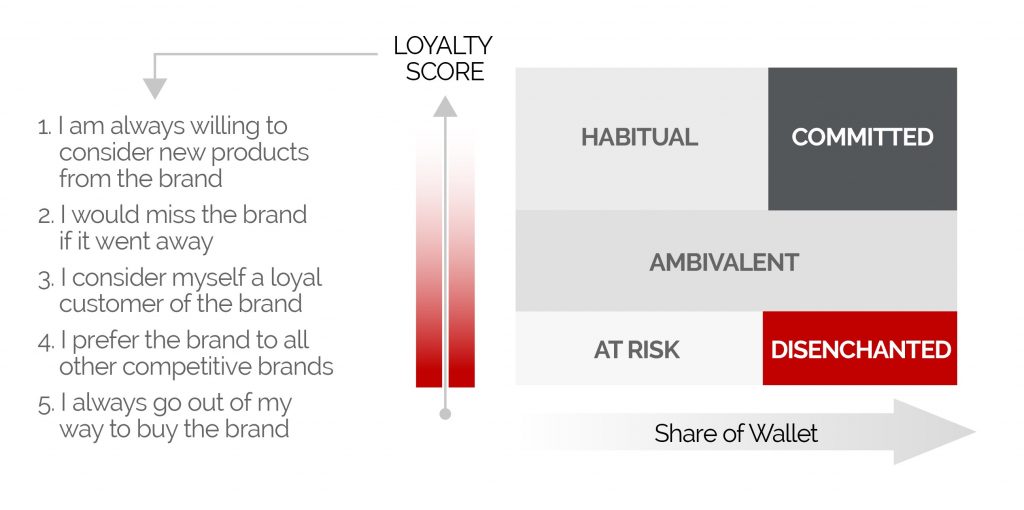
Figure 5 – A CX (Loyalty) Score can help track the progress acompany is making toward becoming more “customer-obsessed”.
By displacing NPS as the go-to loyalty benchmark, the CX Score can help to track the progress of the company as it strives to become more “customer-obsessed”. And by figuring out the exact statistical correlation to actual purchase data, marketers can calculate the incremental value of a one-point gain in loyalty. So when the CFO asks that tricky ROI question, marketers have the answer.
To earn a top CX score marketers must understand what matters to customers. They must be able to identify the satisfaction and loyalty drivers and map them to customer expectations. This is usually visualized in the form of a 2 x 2 matrix (see Figure 6), with the vertical axis representing “Satisfaction” and the horizontal axis “Importance”. In the upper right quadrant are all of the key drivers that the company is satisfying; in the bottom right quadrant are all of the ones that customers rate as unsatisfactory and merit priority attention.
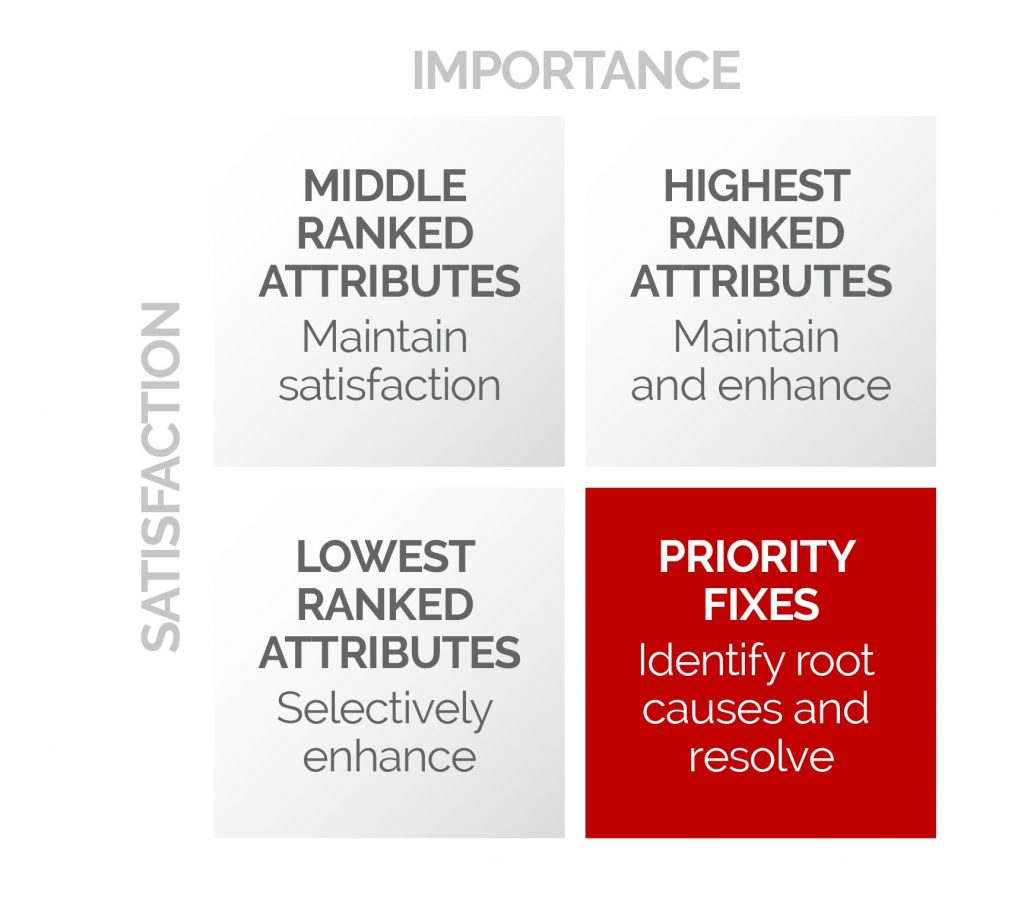
Figure 6 – By mapping customer satisfaction to expectations, marketerscan quickly zero in on fixing the most serious pain points.
Beyond identifying the most urgent fixes, marketers also need to probe for new ways to create value for customers; otherwise brands will be seen as substitutable — a commodity — banished to the periphery of people’s lives. However, value is a slippery word: it entirely depends on the criteria customers apply. Is it just the trifecta of product quality, on-time delivery and empathetic service? Or is it something more abstract, like status (Rolex), sustainability (Patagonia), peace of mind (FedEx), simplicity (Intuit), whimsy (Virgin), or opulence (Four Seasons)? Almost all of the top brands have a single recognizable quality they are known for — an emotive word that springs immediately to mind — which serves as a springboard for innovation.
To inspire value creation marketers need to first ask themselves: What do we want our brand to stand for in the minds of our customers? How can we embed the brand in their lives? What combination of functional superiority and a distinctive experience is essential to being seen as a brand they can’t live without? The best loved companies have figured out how to wrap an experience around their products which is why Apple has become such a cult brand. It has created an enclosed ecosystem that fully integrates its own hardware and software, enriching the lives of customers in ways they could never have imagined themselves.
Even the once neolithic car companies, long wedded to the “buy and drive” dealership model, are beginning to embrace the Apple formula for success. In the automotive sector, according to McKinsey, “The new battleground is customer experience”15. The car makers are trying to transform themselves from OEMs reliant on a dealer network to mobility services providers powered by digital technology. The car companies not only want to make vehicle shopping frictionless and haggle-free; they want to enrich the ownership experience just like Apple. Making money will no longer be limited to selling vehicles off the dealer lot; it will be supplemented through digital subscription services offered throughout the ownership period.
Moments of Truth
The main mission of marketing must be to create a more unified and connected experience for customers that will enhance their lives. The process should start with an exploration of customer expectations — figuring out what people really value — which forms the foundational insight for experience design. Customers will certainly be quick to share what they absolutely loathe about the current experience — often in the bluntest terms, usually from the fiercest detractors — helping to identify the most egregious sins. Even a quick scroll through Reddit posts will expose how the public feels in general (e.g., “Almost time to get the pitchforks out and march on the Weston mansion”).
Harder to tease out of customers is what an ideal experience looks like from their perspective. Customers are limited in their thinking to their own personal frame of reference. Their expectations are shaped by the recognized NPS leaders (e.g., Apple, Amazon, Netflix, USAA, and Tesla). Just by comparison to those companies, customers know where the brand experience is falling short. But it is much harder for them to come up with suggestions beyond what they already know to be possible. Asked to evaluate potential solutions, they can certainly provide valuable input — just not come up with unique ideas on their own.
Instead of asking customers “How can we improve your experience?”, marketers should probe for the definitive moments that matter most to them (like first-time use of product). This line of inquiry has nothing do with their experience using a specific channel — that questioning can be left to the standard NPS surveys which typically follow a service encounter of some kind — and more to do with how much effort is required to move from one stage of the customer journey to another (think about Amazon, a few clicks and the order is on your doorstep the next day).
Armed with an understanding of the make-or-break “moments of truth”, marketers can begin to reimagine the experience from the viewpoint of the customer, using storyboarding to bring to life various scenarios and possibilities. At this point marketers should be less concerned with how quickly the phones get answered and more about ways to dramatically improve the CX score. How can they create as many “Wow!” moments as possible that will leave customers feeling they never want to buy from anyone else? How can they turn “passives” into “promoters”? How can they minimize the loss of customers? All of this reimagining should revolve around one goal: making a meaningful difference in the lives of customers.
The CX strategy emerges out of all of this ground work. That strategy should be fully aligned with a corporate vision that is a higher order declaration of what the brand stands for. Sometimes called a “Brand Spirit Book”, this artifact serves as a manifesto for change, with the customer as the hero of the story. The aim is to humanize the brand — explain in an emotionally compelling narrative why customers are better off with the brand in their lives. It should inspire and animate all internal stakeholders — make the brand relatable — explaining that the brand is not simply different but one that makes a difference. Above all, this vision statement must appeal to the heart, so that everyone in the organization feels part of a larger cause — gives their work meaning — puts the purpose of the company in a broader social context.
If the brand story is the “reason why”, the CX strategy explains how to operationalize that vision. It should offer a holistic picture of a more Unified Experience, not only describing what that means, but how the company will deliver on that objective. The strategy must show how the experience will be distinctive and superior to anything competitors may be offering, and why it will lead to faster revenue growth. And it must establish a set of guiding values and principles that will provide all managers, in every part of the company, a framework for decision-making (for example, giving front-line staff the latitude to make amends with unhappy customers). Finally, the strategy should be accompanied by a high-level roadmap that outlines the transformation priorities and initiatives based on their importance to the customer and the estimated degree of difficulty to achieve, accompanied by a projected timeline and milestones.
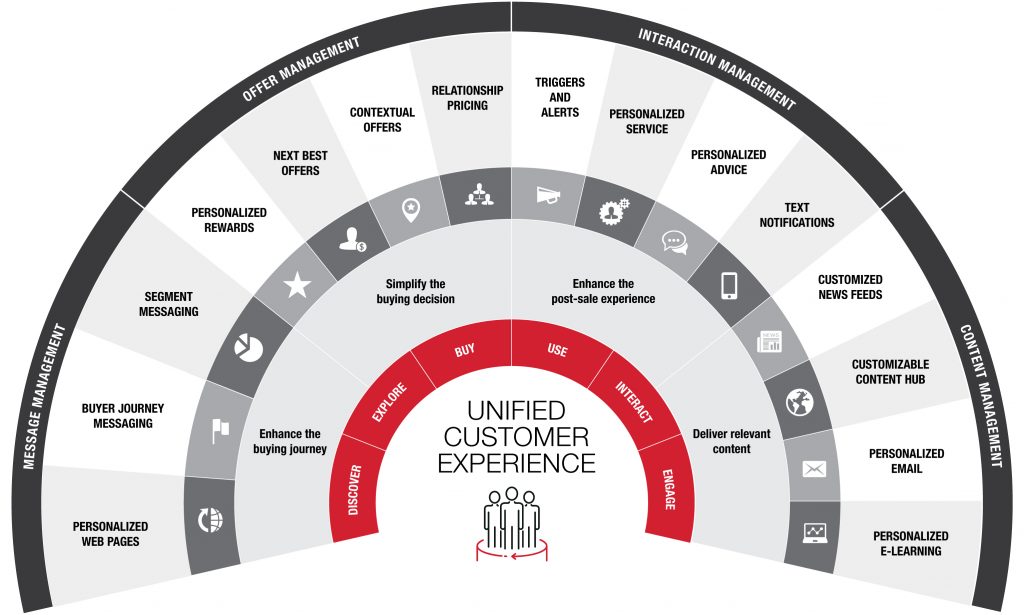
Figure 7 – The strategic framework for a Unified Customer Experience is the Customer Lifecycle.
The Customer Lifecycle
The strategic model for the design of a Unified Customer Experience is the Customer Lifecycle. There are four primary marketing goals wrapped around that lifecycle (see Figure 7): 1) Enhance the buying journey; 2) Simplify the buying decision; 3) Enhance the post-sale experience; and 4) Deliver relevant advice and help through continuous engagement.
In the initial stage (what Google famously coined the “Zero Moment of Truth”) buyers are trying to self-educate — reading reviews, scanning the discussion forums, digesting comparative facts, evaluating the pros and cons, comparing prices — their brand consideration set expanding or contracting based on what they learn. Marketers have to be mindful of how far along the path to purchase they are. The goal is to draw buyers into progressively deeper levels of discovery, being sure to pick up where the last interaction left off. Since first impressions are being formed on the fly, buyers must feel the brand is helping them make the best possible choice, which is why sharing is much more important than closing. Marketers need to ask themselves: How can we make potential customers better informed? How can we make them keen to learn more? How can we be perceived as the brand best positioned to help them, now and in future?
In the next stage, after their preliminary research is done, buyers are ready to make a decision (the “First Moment of Truth”), having narrowed their options to a few brands that satisfy their checklist. Marketers need to anticipate their objections and remove any lingering doubt, using explicit or implicit first-party data to personalize the messaging and provide whatever further proof is required.
Once buyers have converted into first-time customers, the marketing goal shifts from persuasion to relationship management. This is where marketers have traditionally struggled, since their budgets are often over committed to demand generation. First-time customers should be warmly onboarded and given all of the orientation instruction they need to make the best use of their product or service, including contact information so they can reach out to a real person if they run into trouble. That gets the relationship off to the right start, leaving customers feeling reassured they’ve made the right decision, and making their next purchase that much more likely.
Once repeat purchases have become a regular habit, active customers shift into the final lifecycle stage where marketers have an opportunity to secure a lifelong relationship. This is where quality of service is so important, ensuring that any time something goes offside (a delayed delivery, a faulty product, incorrect billing) the problem is resolved immediately. Then, as the relationship matures, customers will become more open to hearing about other products and services. They will sign up to stay informed through personalized messaging and offers. They will subscribe to alerts and notifications. And they will become more willing to share their preferences, leading to a virtuous cycle of communications. High value customers are made to feel pampered through special privileges and entitlements. And the most passionate enthusiasts are invited to join an advisory community where they can provide frank feedback and fraternize with other customers.
A Difference Maker
The implementation details are left to the transformation phase, when a multi-disciplinary team (made up of designers, engineers, subject-matter-experts, amongst others) proceeds with the actual design work, using customer journey mapping to improve or redefine the customer experience. Guided by the CX strategy, which has prioritized the high impact moments throughout the customer lifecycle, journey maps are diagnostic tools that are used in two ways: they visualize in detail what happens today as customers pursue a specific goal (like paying a bill online), while also providing thumbnail descriptions of their state of mind whenever they are thwarted by various roadblocks; they also serve as a template for mapping out an ideal experience along with how customers will benefit and the positive feelings that will evoke.
Ultimately, the job of the CX team is to make sure the end-to-end experience is seamless across every touchpoint. That horizontal design work, which usually crosses different departmental siloes, is divided into discrete but interdependent project tracks that have been prioritized according to customer desirability and feasibility. Often those initiatives can stretch into years of project work, especially if the experience gap between expectations and current state is closer to being a chasm, because it means tearing down legacy infrastructure and putting new technologies and processes in place (Figure 8).
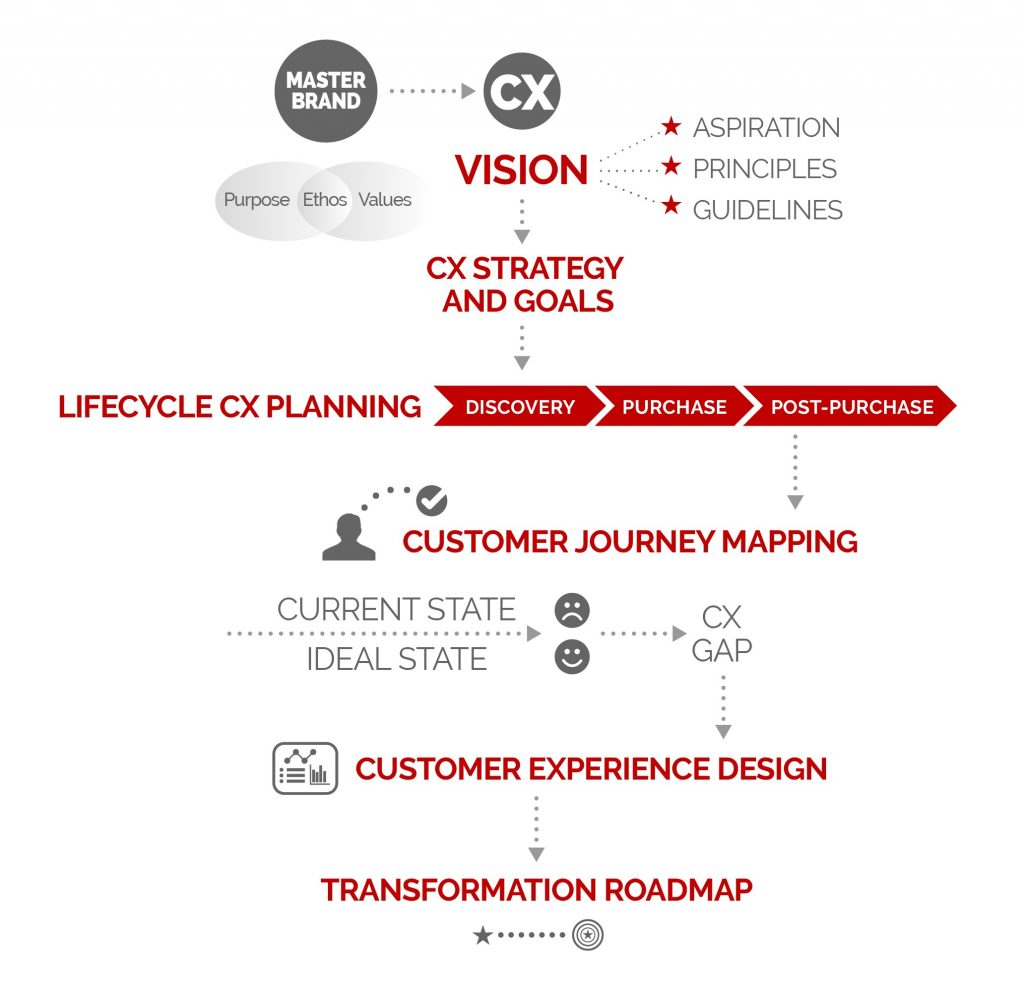
Figure 8 – The CX Vision and Strategy lays out the conditions for success while prioritizingthe major transformation initiatives to follow.
Transformation on that scale — radical, enterprise-wide transformation that aims to change the culture and orientation of a company — can seem formidable — even unattainable. It is not an overnight job. It takes a massive mindset shift and a steely resolve to overcome all of the obstacles: the inevitable pockets of resistance, funding shortfalls, constrained resources, unforeseen landmines, management inertia, and sheer battle fatigue, just to name a few of the more common pitfalls. The risk is great that it will turn into a quagmire. Which is why most transformation initiatives of any ambition eventually lose momentum and fade into history.
That is why it is critical for the CEO to be the most enthusiastic champion of change — someone who won’t just mouth the words “We love our customers” at a town hall meeting, but who will mobilize the entire organization around the cause. A customer-obsessed CEO who will encourage change at every level of the organization. A CEO who is not a profiteer but a humanitarian who wants the company to be a difference maker.
Stephen Shaw is the Chief Strategy Officer of Kenna, a marketing solutions provider specializing in delivering a more unified customer experience. He is also the host of the Customer First Thinking podcast. Stephen can be reached via e-mail at sshaw@kenna.ca
- “No Shame in the C-suite”, The Toronto Star, April 5, 2023
- “Supermarkets are hiking prices faster than necessary”, The Toronto Star, July 9, 2022
- NPS is a customer experience rating system which asks customers “How likely are you to recommend us to a friend or colleague?” and scores the answers on a zero-to-ten scale. The NPS Score is the percentage of customers who are promoters (9 or 10) minus the percentage who are detractors (0 to 6).
- “As Customer Problems Hit a Record High, More People Seek ‘Revenge’”, Wall Street Journal, March 07, 2023
- “The American Customer Satisfaction Index Experiences Largest Increase in 15 Years”, Yahoo Finance, August 8, 2023
- “Forrester’s Canada 2023 Customer Experience Index: Brands’ CX Quality Reaches Its Lowest Point Since 2016”, Forrester Research, Forrester, June 20, 2023
- CMO Navigator, Fall 2023, Dentsu
- Tiffani Bova, “The Experience Mindset”, Penguin Random House, 2023, Pg.XXI
- Jon Picoult, “From Impressed to Obsessed”, McGraw-Hill, 2022, Pg.8
- “Customer Centricity Takes Flight at Porter Airlines”, Customer Strategist, Volume 3, Issue 1, 2011
- “Why Porter Airlines CEO Michael Deluce sees clear skies ahead”, Report on Business Magazine, October 25th, 2023
- Salesforce, State of the Connected Customer, 6th Edition, Pg.7
- “The sharpest tool in the shed: How Lee Valley built a cult-like following”, Report on Business Magazine, May 25, 2023
- “Isadore Sharp: We Hire for Attitude”, Insights by Stanford Business, February 01, 2010
- “The new key to automotive success: Put customer experience in the driver’s seat”, McKinsey, November 2021

